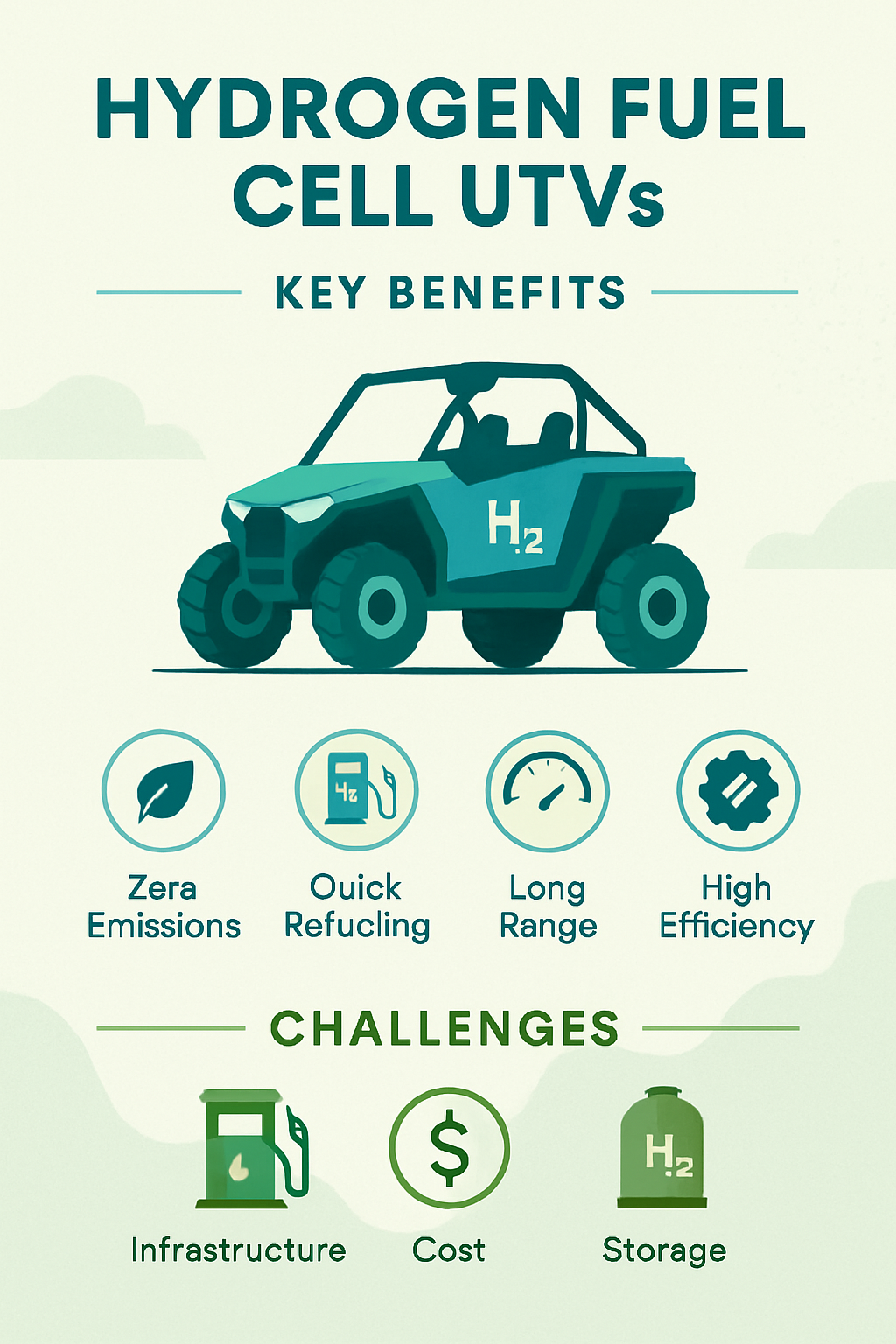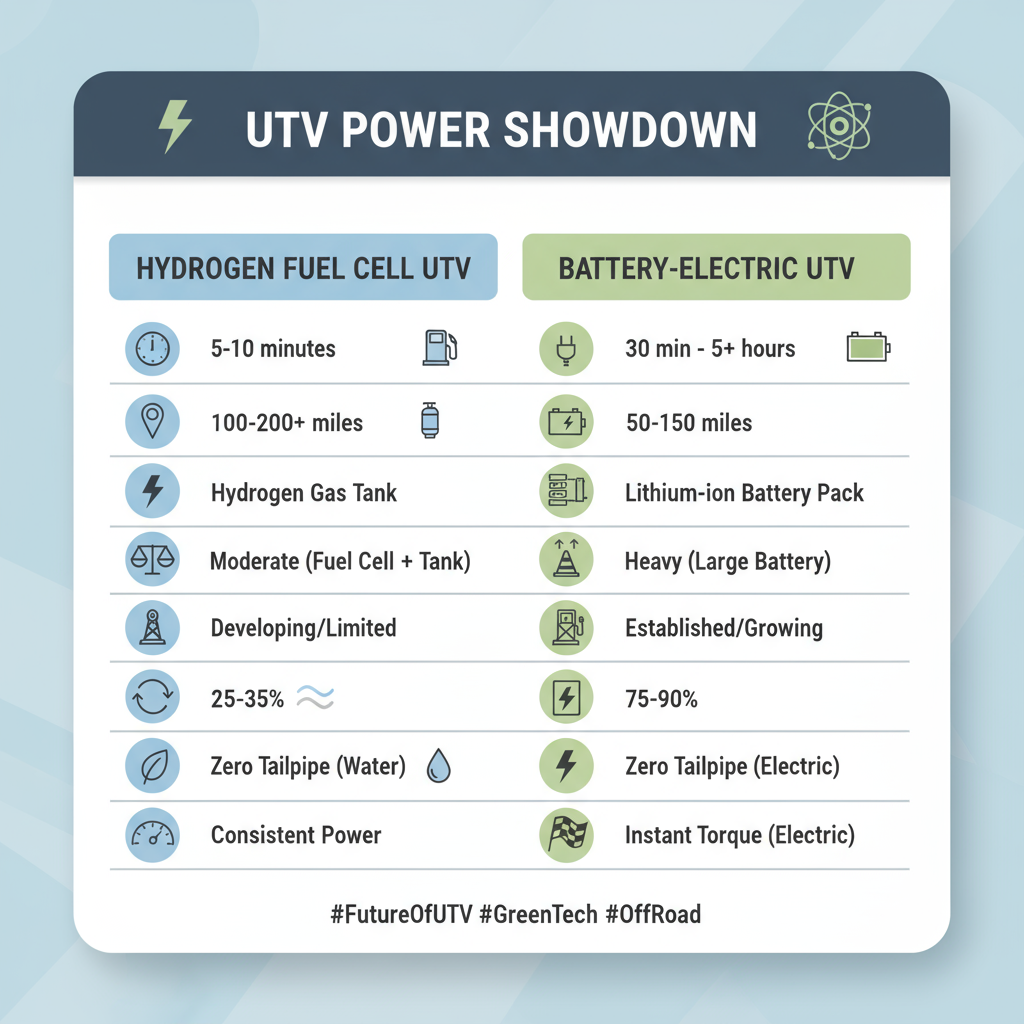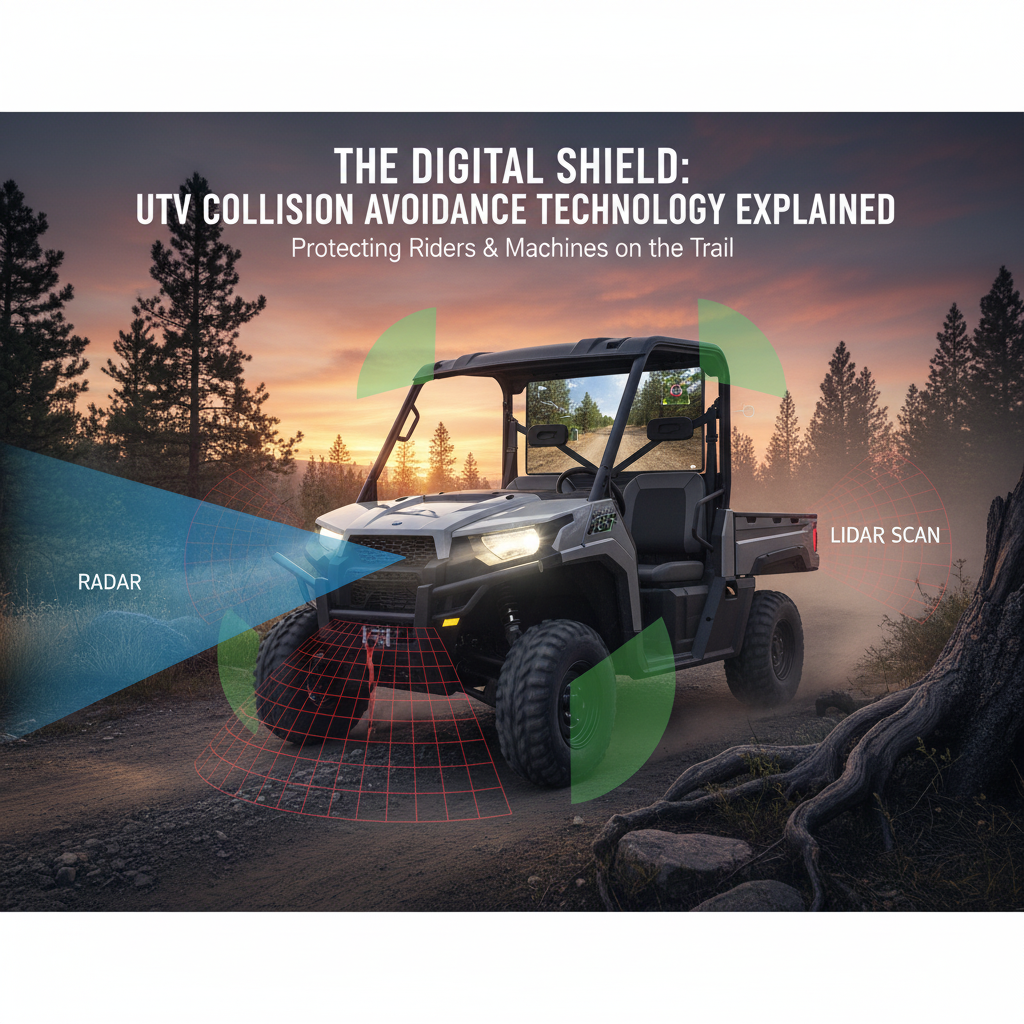Hey there, fellow adventurers and tech enthusiasts!
Have you ever dreamed of tearing through rugged trails, exploring the wilderness, all while leaving nothing but tire tracks and a whisper of clean air behind?
Well, that dream is rapidly becoming a reality with the advent of hydrogen fuel cell Utility Task Vehicles (UTVs).
Forget the noisy, polluting engines of yesteryear; a new era of eco-friendly, high-performance off-road machines is on the horizon, and it’s powered by one of the most abundant elements in the universe: hydrogen.
In this blog post, we’re going to dive deep into the fascinating world of hydrogen fuel cell UTV concepts.
We’ll explore what makes them so special, highlight some groundbreaking examples from leading manufacturers like Lexus and Kia, and weigh the exciting benefits against the challenges that still need to be overcome.
So, buckle up, because the future of off-road adventure is about to get a whole lot cleaner and more thrilling!
What Exactly Are Hydrogen Fuel Cell UTVs?
Before we get too far ahead of ourselves, let’s clarify what we mean by hydrogen fuel cell UTVs.
Imagine a vehicle that generates its own electricity on board, using hydrogen and oxygen.
This electricity then powers electric motors, propelling the UTV forward. The only byproduct of this process? Pure water vapor.
That’s right, zero harmful tailpipe emissions! It’s a revolutionary approach to powering vehicles, especially for off-road applications where environmental impact is a growing concern.
These aren’t your typical battery-electric vehicles, though both use electric motors for propulsion.
The key difference lies in how they store and generate electricity.
Battery-electric UTVs carry a large battery pack that needs to be recharged from an external source.
Hydrogen fuel cell UTVs, on the other hand, carry hydrogen fuel in tanks and convert it into electricity as needed.
This distinction brings some unique advantages, which we’ll explore shortly.
Groundbreaking Concepts: Glimpses into the Hydrogen UTV Future
It’s always exciting to see innovative ideas take shape, and the world of hydrogen UTVs is no exception. Let’s take a look at some of the pioneering concepts that are pushing the boundaries of off-road mobility.
The Lexus ROV Concept: Luxury Meets Wilderness
Lexus, a brand synonymous with luxury and refinement, surprised many with its ROV (Recreational Off-highway Vehicle) concept.
This isn’t just any UTV; it’s a statement.
Designed for those who crave adventure without compromising on style or environmental responsibility, the Lexus ROV is a true marvel.
Imagine cruising through breathtaking landscapes in a vehicle that boasts Lexus’s signature design cues, superior craftsmanship, and a hydrogen engine that produces near-zero emissions [1].
The ROV concept features an exposed suspension, a protective cage, and chunky off-road tires, all designed to tackle the toughest terrains. What’s truly remarkable is its 1.0-liter hydrogen engine.
It works much like a traditional petrol engine, but instead of gasoline, it uses compressed hydrogen delivered by a direct injector.
The result? A thrilling off-road experience with responsive torque and the distinctive ‘Lexus Driving Signature,’ all while emitting virtually no harmful pollutants – just water vapor [1].
It’s a testament to how luxury and sustainability can beautifully coexist.
Kia’s Hydrogen-Powered Light Tactical Vehicle: Rugged Utility for Demanding Missions
On a different end of the spectrum, Kia has showcased the versatility of hydrogen power with its hydrogen-powered ATV concept car, specifically designed for light tactical applications.
Unveiled at IDEX 2023, this concept demonstrates how hydrogen fuel cells can meet the rigorous demands of military and utility operations [2].

This robust vehicle is built for quiet and secure operation, making it ideal for sensitive missions.
Its rugged durability and high payload capacity mean it can handle challenging environments and transport essential gear with ease.
Kia’s concept proves that hydrogen technology isn’t just for recreational fun; it has serious potential for critical, demanding tasks where reliability and environmental considerations are paramount [2].
These concepts are more than just prototypes; they are tangible proof that hydrogen fuel cell technology is a viable and exciting path forward for the UTV segment.
Why Hydrogen? The Unbeatable Advantages of Fuel Cell UTVs
So, what makes hydrogen fuel cell technology such a game-changer for UTVs?
Let’s break down the compelling advantages that are driving this innovation:
1. Zero Emissions, Pure Adventure: This is perhaps the most significant benefit.
Hydrogen fuel cell UTVs produce absolutely no harmful tailpipe emissions.
Instead, they emit only water vapor and warm air.
Imagine exploring pristine natural environments without contributing to air pollution or your carbon footprint.
It’s a win-win for both adventure seekers and the planet.
2. Lightning-Fast Refueling: One of the biggest pain points with battery-electric vehicles is the charging time.
Who wants to wait hours for their UTV to recharge when there’s an adventure waiting?
Hydrogen UTVs can be refueled in minutes, much like filling up a gasoline tank.
This means less downtime and more time on the trails, which is crucial for both recreational users and commercial operators.
3. Extended Range for Epic Journeys:
Hydrogen vehicles often boast a range comparable to, or even exceeding, traditional gasoline-powered vehicles.
We’re talking about 300 to 400 miles on a single tank!
This extended range is a massive advantage for UTVs, which are often used in remote areas far from refueling or charging stations.
You can embark on longer, more ambitious expeditions without range anxiety.
4. High Energy Efficiency:
Fuel cells are incredibly efficient at converting hydrogen into electricity.
This means more of the energy stored in the fuel is used to power the vehicle, leading to better overall performance and fuel economy compared to traditional internal combustion engines.
5. Lighter and More Agile: Unlike battery-electric vehicles that rely on heavy battery packs, hydrogen fuel cell systems require smaller, lighter batteries.
This reduction in weight can significantly improve a UTV’s handling, agility, and payload capacity.
For off-road enthusiasts, a lighter vehicle often translates to better performance over challenging terrain.
6. Whisper-Quiet Operation: Hydrogen fuel cell engines operate much more quietly than their gasoline counterparts.
This not only enhances the user experience by reducing noise pollution but also allows for a more immersive experience in nature.
For tactical applications, quiet operation can be a critical advantage.
These benefits paint a clear picture of why hydrogen fuel cell UTVs are not just a passing trend, but a serious contender for the future of off-road mobility.

Navigating the Bumps: Challenges on the Road to Hydrogen UTV Adoption
While the advantages of hydrogen fuel cell UTVs are compelling, it’s important to acknowledge the hurdles that need to be overcome for widespread adoption.
Every revolutionary technology faces its share of challenges, and hydrogen is no different.
1. The Hydrogen Storage Conundrum:
Hydrogen, while abundant, is a light gas. Storing enough of it on board a vehicle to provide a practical range requires high-pressure tanks.
This impacts vehicle design, adds weight (though still less than large battery packs), and can increase manufacturing costs.
Researchers are continuously working on more efficient and compact storage solutions.
2. Building the Hydrogen Highway: Infrastructure Gaps: This is arguably the biggest challenge.
The hydrogen refueling infrastructure is still in its infancy compared to gasoline stations or electric charging networks.
For hydrogen UTVs to become truly viable, a robust network of hydrogen production, distribution, and refueling stations needs to be established.
This requires significant investment and coordinated effort from governments and industry players.
3. The Price Tag: Cost of Production and Vehicles: Currently, the cost of producing hydrogen, especially ‘green hydrogen’ (produced using renewable energy), can be higher than traditional fuels.
Similarly, the advanced technology involved in fuel cells and hydrogen storage makes hydrogen UTVs more expensive to manufacture than their conventional counterparts.
As technology matures and production scales, these costs are expected to decrease, but it’s a barrier for now.
4. Durability in the Wild: Ensuring Robustness: UTVs operate in some of the harshest environments imaginable – dust, mud, extreme temperatures, and constant vibrations.
Ensuring the long-term durability and reliability of sensitive fuel cell components and hydrogen storage systems in these conditions is a critical engineering challenge that manufacturers are actively addressing.
5. The Energy Efficiency Debate (Well-to-Wheel): While fuel cells are efficient at converting hydrogen to electricity,
the overall energy efficiency from the point of hydrogen production to its use in the vehicle (often called ‘well-to-wheel’ efficiency) can be lower than that of battery-electric vehicles.
This is due to energy losses during hydrogen production, compression, transportation, and conversion in the fuel cell.
However, advancements in hydrogen production methods and fuel cell technology are continuously improving this metric.
These challenges are significant, but they are not insurmountable.
With continued research, investment, and innovation, the hydrogen UTV market is poised to overcome these obstacles.
The Road Ahead: Future Outlook and Market Trends for Hydrogen UTVs
The journey for hydrogen fuel cell UTVs is just beginning, but the path ahead looks incredibly promising.
Several factors are converging to create a fertile ground for their growth and widespread adoption.
Collaborative Innovation Driving Progress
It’s truly inspiring to see major players in the automotive and powersports industries joining forces to accelerate hydrogen engine technology.
Take the HySE (Hydrogen Small mobility & Engine technology) project, for instance.
This groundbreaking collaboration brings together giants like Yamaha, Kawasaki, Suzuki, Honda, and Toyota.
Their collective goal? To develop hydrogen-powered engines for small mobility solutions, including our beloved UTVs.
This kind of industry-wide commitment is a powerful indicator that hydrogen isn’t just a fleeting trend; it’s a serious contender for the future of off-road power.
The Economics are Shifting: Falling Costs
One of the most exciting developments is the projected drop in hydrogen production costs.
Experts predict that the cost of producing hydrogen could fall by nearly 30% by 2030.
This isn’t just a minor adjustment; it’s a significant shift that will make hydrogen fuel much more competitive with traditional fuels and even electricity.
As hydrogen becomes more affordable, the economic viability of hydrogen UTVs will skyrocket, making them an attractive option for a broader market.
A Growing Market Hungry for Innovation
The overall UTV market is already experiencing robust growth, with projections showing continued expansion.
The global utility terrain vehicles market was estimated at a staggering USD 7.23 billion in 2024 and is expected to grow at a compound annual growth rate (CAGR) of 5.7% from 2025 to 2030.
Within this expanding market, there’s a clear and increasing demand for electric and low-emission vehicles.
This creates a perfect storm for hydrogen-powered models to carve out a significant niche, appealing to environmentally conscious consumers and businesses alike.
Global Push for Clean Mobility
Governments and corporations worldwide are throwing their weight behind clean mobility initiatives, investing heavily in hydrogen infrastructure.
Toyota, for example, is actively partnering with the EU to develop hydrogen fuel corridors, which will be crucial for supporting the growth of hydrogen-powered transportation across various sectors.
These large-scale investments are laying the groundwork for a future where hydrogen refueling stations are as common as petrol stations, making hydrogen UTVs a practical choice for everyone.
Hydrogen vs. Electric: A Quick Comparison for Off-Roaders
When considering eco-friendly UTVs, the natural comparison often arises: hydrogen fuel cell vs. battery-electric.
Both offer significant advantages over traditional gasoline engines, but they approach the challenge from different angles.
Here’s a quick rundown to help you weigh the options:
As you can see, each technology has its strengths.
Hydrogen UTVs shine in areas like quick refueling and potentially longer range, which are critical for extended off-road excursions.
Battery-electric UTVs, while requiring longer charge times, benefit from a more established electrical grid and generally higher well-to-wheel efficiency.
The choice often comes down to specific use cases and priorities.
The Adventure Continues: Embracing a Sustainable Off-Road Future
The emergence of hydrogen fuel cell UTV concepts marks a thrilling new chapter in the world of off-road adventure.
From the luxurious and eco-conscious Lexus ROV to Kia’s rugged tactical vehicle, these innovations are redefining what’s possible on the trails.
While challenges remain in infrastructure development, cost reduction, and storage solutions, the rapid pace of technological advancement and collaborative industry efforts paint a very optimistic picture.
Imagine a future where every off-road excursion is not only exhilarating but also environmentally responsible.
A future where the roar of an engine is replaced by the quiet hum of a fuel cell, and the only exhaust is pure water.
Hydrogen fuel cell UTVs are bringing us closer to that reality, promising a sustainable and thrilling way to explore the great outdoors.
What are your thoughts on hydrogen fuel cell UTVs? Are you excited about the prospect of zero-emission off-roading?
Share your comments below and let’s continue the conversation about the future of adventure!
[1] Lexus Europe. (n.d.). *Lexus ROV Concept Car*. Retrieved from
[2] Fuel Cells Works. (2023, February 20).
Kia Reveals Concept for Hydrogen-Powered Light Tactical Vehicle*. Retrieved from




